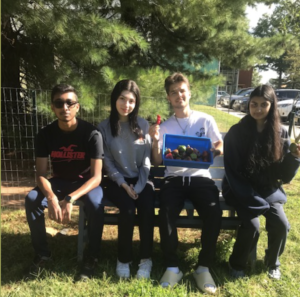2023 Garden Harvest
Now that the weather is warming up, our school garden is ready to welcome you. If you are interested, please visit it whenever you have time.
The biodiversity you would find in the garden are
1) Rye plant – three raised beds are full of rye. They appear like tall grass. Rye is a grain-producing plant. The grains are commonly used in making rye bread. This plant is cold-resistant had been growing throughout the winter. It helps condition the soil in harsh weather and keeps the underground microbial activities going.
2) Pea plant – It has germinated well, is healthy, and shoots out many tendrils. Pea seeds were planted between the rows of rye plants so that the tendrils would twin around the rye and climb up. Pea plant is rich in nitrogen and fixes the nitrogen in the soil, making it healthy and fertile. [nitrogen is the main component of any fertilizer]
3)Hairy Vetch – a small plant with compound leaves. It is a leguminous plant that allows rhizobium bacteria to grow in the roots and form many nodules, an excellent example of a symbiotic relationship. These nodules fix atmospheric nitrogen and convert it into ammonia that the plant can use for its growth and development.
4) Lemon balm, Thyme, parsley, and a few other herbs – in the last raised bed with two trellises in the corner.
Garden Harvest!
It was a small but mighty harvest from our school garden. A variety of peppers were picked and shared with the school kitchen. The peppers were cut up and included in the salads prepared for lunch.
















































